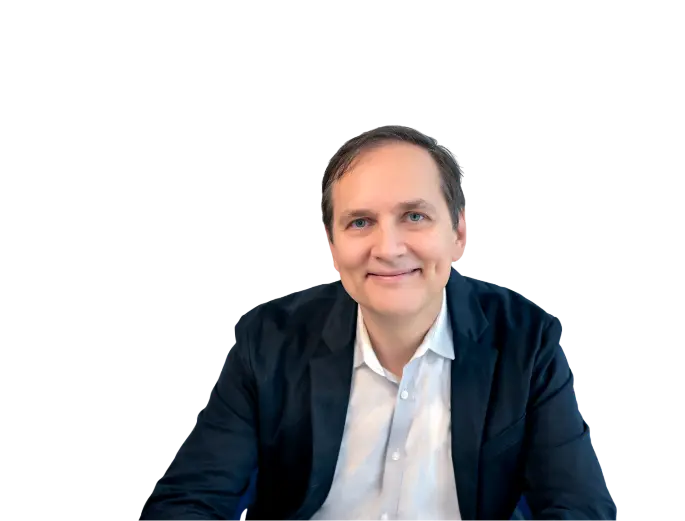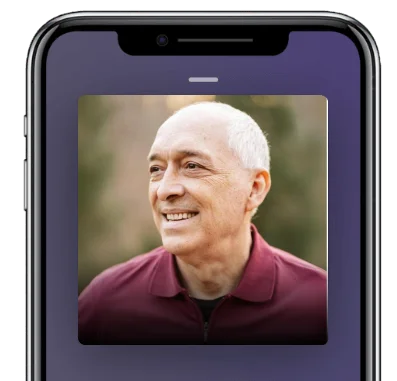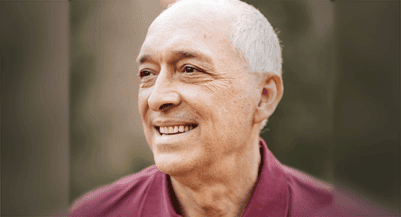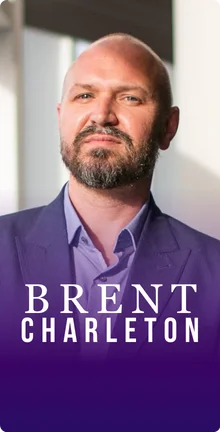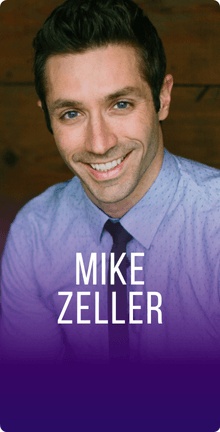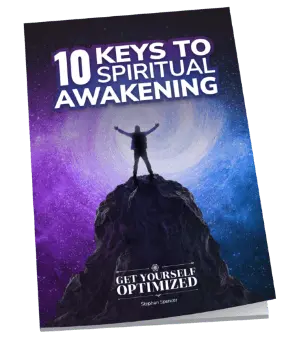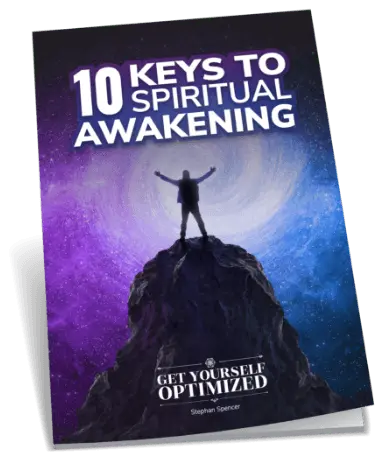David, it’s so great to have you on the show.
Thank you, Stephan. I’m delighted to be on it with you.
First, we need to define for our listener, what the heck is TRE?
I try to keep this as simple as possible. Think of an image that if you’ve ever gotten frightened or you’ve seen somebody else who got frightened, and when they got scared, they started to shake. Their hands would shake or if they’re standing in front of an audience, their legs might shake a little bit. That’s where we get the phrase, “Our knees are knocking.” Their voice might quiver a little bit. What I discovered was that all that shaking that happens in the human body is in fact the nervous system deliberately activating the shaking to calm itself down. The body shakes itself when it gets overstimulated. And that shaking, we keep trying to stop it because we’ve given false identification to it. It shows that I’m weak or I’m vulnerable or I’m afraid. But it’s really a very healthy mechanism.
What TRE is, is it’s a series of seven exercises quite simple so that anybody can do them. It artificially activates that shaking mechanism. The last exercise, you’re lying on the floor, the mechanism activates and you lay there and you literally can physically feel your body shaking and it’s shaking out the stress that it wasn’t allowed to shake out at the time of the stressful event. To self activate the mechanism in the human body, it’s literally designed to just release both physical tension in the muscles as well as the neuro-emotional connection that goes between the brain and the body.
Wow, that’s really fascinating. It reminds of, a long time ago, I saw a dog get hit by a car. The dog ended up being okay, but the first thing it did after getting hit was it started shaking and just doing this shaking thing. I saw it come back to life in a way, or just come back to normality. But it was almost like an involuntary thing that the dog had to do.
That’s precisely right. It’s involuntary. The only reason we inhibit it is because we have a cortex or an ego, if you will, that blocks it from happening. Otherwise, it would happen. At times of very high stressful events, we find ourselves shaking. We say, “I got to stop this. I got to stop this,” which is the wrong thing to do. But it was able to overwhelm the ego and therefore have its rightful place. You see this in dogs in a thunderstorm. They’ll tremor often as well. It’s the same principle. They’re shaking because their nervous system elevated and the shaking itself is down-regulating the nervous system so it can go back to a calm state. All mammals do this.
Got it. If somebody applies your exercises, they can release trauma from some horrible situation, abuse, whatever that happened in their distant past as well as something that happened just recently?
Yes. If they can release all traumas that are still connected either psycho emotionally or physiologically to their system. Some traumas are like falling off a ladder or falling off your bicycle at the age of 12 and you broke your elbow. Yes, that was emotionally distressing, but it was more physical. That trauma can still remain in the tissue even though your elbow seems to have restored itself back to health. There are still very small patterns of tension or trauma in the body.
All that shaking that happens in the human body is the nervous system deliberately calming itself down. Share on XIt works for everything from mild stresses. You can do it at the end of the day, if your boss was angry during the day and you come home and you’re upset and it was a difficult traffic experience and everybody was angry. You can reduce the stress of the day in about 15 minutes of shaking. Now, if you’re working with long-term traumas, that’ll certainly take a lot more time to deal with because you’re not just working with physically relaxing the body, but you’re working with the psycho-emotional connection of those experiences if they happened to resurface during the release process.
Right. I’ve heard this expression that the issues are in the tissues. When you have trauma events that goes somewhere in your body, it’s not just in your mind somewhere and tucked away in the dark recesses of your memories. It’s actually in your body somewhere. You might be holding it in certain tension in your shoulders or in your chest or somewhere.
That’s exactly right. If you think of it, just think about the most simple terms of being a human being. If my spouse comes home at me and she’s angry, as an example, I might start to clench my shoulders because I know what the issue is about. It’s always the same issue. We always go through it, so I clench my shoulders or my neck.
There is never a stressful, tension-filled, traumatic event that does not affect both the brain and the body. That’s an impossibility because we live in an interrelated organism and it’s bi-motor in this communication. It communicates from brain to body and body to brain. It’s an impossibility to have stress or trauma without both the brain and the body being affected.
If you are doing talk therapy over the course of the year going in for hour-long sessions just to talk about it and see if you can clear that trauma and you don’t address the trauma being in your body in some fashion, it probably won’t clear it, right?
Let’s say if you’re doing talk therapy, sometimes you end up crying because you start from the brain, you recall the memory, it evokes the emotion and the emotion evokes the crying, which is the diaphragm releasing itself because the diaphragm probably constricted during the time of the traumatic event. That’s an example of how cognitive behavioral therapy can actually access the body. But, also body therapies can access the psycho-emotional issues as well. What we really need is both of those to reunite again and appreciate the equal balance between cognitive therapy and body therapies.
Body therapy has been dismissed or diminished because we never had enough research to really substantiate it. But now that we have more medical technology that can research more of how much the body is involved, you end up with what Bessel van der Kolk, who’s one of our major gurus in trauma recovery says, “There’s no way that you’re going to recover from trauma without including the body.”
When I think about body workers and massage therapists, they’re kind of relegated to the lower end of the therapy, transformational, personal development help type perspective. That’s a shame because they are so important to get that release and get those issues out of the tissues.
I think what happened is that, if you look at the history of therapy, it started from Freud in Europe and being cognitive was a way to try to control the process and if you are in your body. We still feel our bodies like an uncontrollable organism. We don’t know what to do with it. We’re uncomfortable even living in it. Yes, we ended up slowly relegating it to secondary status below cognitive therapy.
Now, that’s beginning to shift because like I said, we have more research to demonstrate all this body therapy modality should be integrated into cognitive therapies as well because that will produce the ultimate healing of a living organism, in which we reside. We don’t reside just in a brain or just in a body. It works in an integrated whole. It will heal itself in an integrated manner as well.

That makes sense. Now, where would EMDR fit in this spectrum of things? Is that more in the mind or is that in the body or is it equally both?
EMDR is the more cognitive process of following the nervous system, that’s what it’s trying to do. It’s trying to affect the nervous system. But the nervous system message integrated with the body. You could do EMDR, you could have an emotional issue surface and you could have an emotional issue release as well.
Without even knowing what that issue was.
Yes. The same thing happens when I do TRE. People will have releases in their body and they’ll say, “I have no idea what that’s from. I don’t know what’s that about.” They might even cry and they say, “I don’t know why I’m crying but it feels right.” I have discovered that many times, we do not need the memory to heal the trauma because many times the memory is not there. Even for soldiers who I worked with extensively, they were knocked unconscious when they were at war, yet their body still has the memory of what it experienced even though their cognition was not on line. Their body would actually go through the events right in front of me, I’ll see it unfold and they’ll have no memory of it.
That’s fascinating. Just for our listener who’s not familiar with EMDR, it stands for Eye Movement Desensitization and Reprocessing. Your eyes are supposed to follow something that’s been put in front of you tracking from left to right or whatever. I’ve tried it once, maybe twice, didn’t really do anything for me.
The thing that I find with all of these different modalities is quite interesting. It depends on what the individual’s issue is and where are they. As an example, I have a lot of people come to me and say, “I don’t want to talk. I’m tired of talking. I don’t want to say anything.” I’ll say, “Let’s do body work.” And other people come in and say, “I don’t want to do body work because I’m afraid of it, so let’s talk first.” Other people will come in and they might come in with a spiritual crisis and say, “Ever since my son died, my whole life has been thrown into crisis. I don’t believe in God anymore.”
Every person comes to their healing process from different starting points. But ultimately, if you follow them through, they end up hitting all the starting points. EMDR might not have been right for you because you are maybe just going to explore it or experiment with it, see how it worked. But another modality might have worked and a year from now, EMDR might work.
Okay. How did you end up coming up with TRE? Did you end up trying to heal yourself from some traumatic event? I saw in your bio that you lived in war-torn countries and natural disaster zones. I’m really curious how this unfolded for you?
It was interesting. Living in war kind of thrown into my face the intensity of seeing people shake out of fear. We’ve all seen it in our cultures. We see it in our children all the time and we see it regularly. But it’s never thrown in our face. It was so intensely presented to me, I couldn’t ignore it. I both tremble in terror as well did my other colleagues that I was with while we were living in these war-torn countries.
Because I saw it consistently and regularly, I thought, there’s something going on here that didn’t make sense to me because I was trained that the shaking was bad and that we should medicate people to stop it. But in this war countries, we had no medication and we constantly shook day after day after day and nothing bad happened to us. A few times, I discovered shaking felt good. I didn’t have an explanation for it, but it felt good, so I let it happen.
It’s from that. This is what I love to tell people. All I did was see what everybody in the world has already seen. I just asked the question differently, could this possibly be helping us? Rather than this is a damaged nervous system that’s on its way to explosion, can this shaking be helping us?
That’s when I came back to the States. Yes, I had to go through my own process of recovery because I knew I had PTSD. I was a clinical therapist at the time, so I knew I had PTSD. I knew that clinical therapy and cognitive behavioral therapy wasn’t enough, although I did it. I had to address my body. So, I used this shaking mechanism, along with other body modalities to actually release the trauma from the tissue. That’s what actually produced the final healing process.
Did you get a diagnosis of PTSD? How did you come to the conclusion that you had suffered from post-traumatic stress disorder?
When I came back, since I was a clinical therapist, I had the symptoms of PTSD. I had nightmares, I was disturbed, I couldn’t be around people, I got angry very easily, all those types of irritating symptoms. I went to the hospital and I deliberately knew what test I wanted to be done on myself because I’ve done that before. I said, “I want you to administer these PTSD scales on me. I needed to see what degree did I have PTSD.”
The body shakes itself when it gets overstimulated, but we keep trying to stop it. It's often perceived as weak or vulnerable, but it's actually a very healthy mechanism. Share on XThey administered the scales and I was pretty high on it because I just came back from a war zone that I’ve been living in for a year. And I moved to New York City, which is not the safest place to move to when you’re traumatized. I was pretty high on the scale. Then I knew what to do after that. I knew how to be cautious and took care of myself.
So then you created these exercises as you are experimenting, trying to figure out what worked and what didn’t. How many exercises are there? And how frequent should you be doing this? What’s the recipe for success here?
I created the exercises by looking at other body modalities, such as Tai Chi, Bioenergetics, and Core Energetics. I looked at who’s doing body work. I took out all of these things and my goal at the time was how do I get people to start to do what we call get grounded. Traumatized people are numb in their bodies, or they’re squeezing tight, how do we get them to go down? But they have to be simple also because a lot of traumatized people have physical limitations. They can’t do difficult or complex exercises.
I started with simple exercises where they start from their feet, they move their feet in their ankles, then they move the calf muscles on the lower part of the leg, and then the quadriceps muscles in the top part of the leg, and then they twist their hips. All of it was about getting them to feel their legs and feel their feet so they could create a sensation in their body that they’re calming down. They can breathe deeper, they can relax. That’s what they do.
Then the last exercise, they actually lay down on the floor and they lay in what’s called the butterfly position in yoga. They’re also at stress when they pick their pelvis up off the ground. You can see all these exercises for free on my website, traumaprevention.com, so they could follow the exercise routine. When they are lying on the floor and they’re in the butterfly position, they slowly close their knees. Just by slowly closing the knees, it will activate the tremor mechanism on what’s called the adductor muscles that are in the inner thighs of the leg.
Those tremors sustain themselves, which is a big surprise to the field of physiology because they thought once you take away the stress, tremors like that stop. But I proved it’s the opposite. If you slowly take away the stress, the tremors not only continue, but they actually can increase and then they move through the body looking for tight contraction spots throughout the body and releasing them.
For people who are doing this for the first time, if you just have stress or tension, these are kind of innocent, you can do them easily and you don’t have a problem. But if you’re going to be working with some trauma or a certainly developed mental trauma that has a lot of psycho-emotional stuff attached to it, you may want to do this with a certified TRE Provider.
Oftentimes, traumatized people are not sensitive enough to their feelings that they can actually regulate the intensity of their feelings so they could flood themselves with emotions. If somebody has to help them regulate. It still works extremely well, but they usually need someone to be near them to try to help guide them through the process until they can regulate it by themselves.
It’s actually quite simple. You lay on the floor basically and shake. In that process, the body simply reduces the tightness in the muscle and when that releases, it releases any type of psycho-emotional issues that were connected to why you created the tightness.
All right. That sounds really interesting. Is that something that somebody can try even if they don’t think they have any trauma to process? They just think, “Oh, I’m going through a lot of stress right now, work is hard, it’s the holidays, I’m just having a hard time keeping up with everything that has to be done.”
They can try it because the worst that’ll happen is, they’ll discover this is too much for me, I’m too frightened of it. Then they now need to see somebody to guide them through the process. Other people will do it and say, “Wow, that was interesting. That was fun, or I shook or I’m not sure what happened. But something happened to me.” You’ll physically feel it.
I tell people, start slow and small. Do the exercises and tremors for just five minutes, as an example, just to get the feeling of it. And then wait a day. Then the next day, tremor for 10 minutes. Then wait a day and the next day you tremor for 15 so that each individual can find what is their speed that they feel most comfortable with.
It should never feel frightening, it should never feel uncomfortable or painful. It actually should feel pleasurable. It will feel weird at the beginning because people say, “This is weird. My body’s doing something and I can feel that it’s doing it, but I’m not controlling it.” Their first word is weird all the time. But once they get used to it, they like it.
It’s similar to this. If you think shivering in the cold, we all know what that’s like. Every human body on the planet shivers. When their temperature drops to a certain degree, the body activates its shaking mechanism. The shaking mechanism is for the purpose of increasing circulation and warming the body. Once it’s warm enough, the shaking stops. This is no different. It’s just about stress and tension instead of about the temperature of the body. But it’s the same principle and the same mechanism actually involved.
It’s interesting. That reminds me. I learned about a technology that uses shivering as a weight loss and an exercise regimen. It’s a device that you strap on to your legs and just Velcro it on and then your body shakes. It shakes to the right frequency where it fools your body into thinking that you’re cold and then it needs to burn calories to keep warm. It’s fascinating.
I saw this being demonstrated at an event this year. It’s like $400, $500, $600 technology. It’s not expensive, but people have tried it, swore by it like, “Yeah, this really works, I put this on for 30-45 minutes, or whatever and I’m sweating. I’m out of breath and I’m just sitting on the couch watching Netflix or standing up watching TV.” They’re saying that this is a powerful innovation in exercise. It’s just so weird to me.

We have an industry now that’s really into creating these devices and mechanisms in the human body and many of them to shake the body. We’re getting the concept that shaking the body has tremendous value in multiple different dimensions or different ways. I’m just trying to show you that’s absolutely true and the body already knows it and can do this by itself to reduce its own stress levels.
We have those chairs at the airport that you sit in and you put your dollars in and they vibrate you for 15 minutes to relax you. Why did they do that? Because we know that vibration of the human body at a certain frequency reduces tension in the muscles, reducing tension in the muscles reduces stress levels. We already know all of this in terms of its theory and understanding and machines, but we’re using a machine in a way that we don’t have to, we could actually use the human body’s own mechanism because it’s already known this long before we built these machines.
It makes total sense. What would be an example or two of powerful successes, breakthroughs, transformations that happened because of TRE?
The biggest ones I can tell you would be with military personnel because I work with both active duty and veterans. The first time they do it, they absolutely sleep like 24 hours afterward. They’re just dead exhausted, which is perfect because the only thing a soldier ever come to be before is because they want to be able to sleep. That’s very easy and simple. You can get somebody to have an intense experience of deep sleep. The other thing that seems to be very good for, because I work with a lot of first responders and athletes, they have greatly increased mobility and flexibility. It’s releasing this chronic tension pattern for the body, so by its nature, it’s going to produce greater flexibility.
Those would be the two greatest things. But when you’re talking about long term trauma, it has the ability to get people out of the cycle that they’ve been caught in for years and years and years. If we have developed mental trauma, we’ve created patterns over the years. Relational patterns and the way we physically hold our bodies, there are patterns there. This breaks those patterns and gives the body all of its possibilities back to go back to its natural state again.
That would be the most general way of saying it because say, “What does it heal or what does it cure?” all I really believe it’s doing is reducing the hyperactivation of the nervous system. It’s calming down the body. When you reduce stress, you increase the body’s ability to restore itself. You increase the immune system again because stress reduces the immune system.
People tell me while it healed this or it healed that or it cured gastrointestinal problems and all this stuff, I don’t believe it’s doing any of those things specifically. I believe it’s reducing the stress level now that the immune system can now activate strong enough and that resolves the secondary or tertiary problems they were having in their bodies.
Okay. If somebody is experiencing stomach issues or digestive issues, it could be because of their parasympathetic and sympathetic nervous system. Which one would be up-regulated if you’re in stress response and then the other one is down-regulated so then their immune system is compromised. Which one is which first of all? Parasympathetic is which one?
That’s the one that calms you down. It’s like a parachute. It calms you down.
Thank you, that’s easy. I’ll remember that one. The parasympathetic would be downregulated and then the sympathetic would be upregulated because you’re just hyper vigilant, you’re worried that this trauma is going to happen again because your amygdala is not really able to understand the difference between past, present, and future. It all feels like it’s happening now even something that happened 30 years ago. You’re constantly on the lookout for that trauma to resurface, so you’re not sending the blood supplies much to the digestive system and so forth, you might end up with digestive problems over time.
That’s exactly right. The sympathetic nervous system overstimulates, which it does for all stress or trauma. Even driving home from work in bad traffic can overstimulate the sympathetic nervous system. Once it overstimulates, everything gets dysregulated until it all goes into emergency mode to try to figure out how am I going to survive this. You’re right. We end up living in emergency mode and that’s what creates all these secondary and tertiary illnesses in the body.
We already know, it’s been proven and demonstrated around the world. Stress is the number one killer, not heart disease any longer. It used to be heart disease and now it’s stress. It’s not exactly the stress, but it’s everything that gets dysregulated in the body because of the stress levels. We have to down-regulate that sympathetic nervous system to calm the individual down and then the organism can redistribute all the appropriate chemicals and hormones to put the body back into its healthy state. But until we down-regulate it, it can’t do that. That’s what this tremor mechanism does. It assists in down-regulating that high-stress response of mostly adrenaline and cortisol.
Let’s say that hypothetically, a veteran comes into your office for help. Let’s say he’s not been able to sleep for a solid night for decades. You’re going to do what in the first session? Like, have that person do these exercises for 15, 30 minutes or an hour, whatever, guided by you during the session? What does that session look like for somebody who’s had PTSD for decades and it’s just really affecting their life?
With people, it depends on their body structure, but since you talked about veterans as an example, they usually have very tight muscles, strong bodies, etc. I’ll do the exercises for them for about 15-20 minutes because I need to stress their body structure to the degree that they’re holding.
Somebody comes in their 80 years old, I don’t have to do the exercises as long as somebody comes in, they’re 30 years old, and they’re weightlifters as an example. The time frame for the exercise depends on the body structure that I’m working with. In general, they take about 15-20 minutes to go through them slowly and easily for the first time. After that, you can go through more quickly and more easily.
They lay on the floor and when the tremor mechanism activates, because I’m with them, I will allow that tremor mechanism to stay active for anywhere from 30-45 minutes. I’ll start making some hands-on interventions with them, trying to release the shoulder tension or their back tension. I’ll watch the tremor mechanism because it actually travels through the body. It starts in the legs, but it’ll go through the pelvis, into the lower back, and it’ll come up the spine. If I see it moving through the body and it gets stuck, maybe at the diaphragm, then I can do a diaphragm release. If I can release it right, then the tremor mechanism will go right through the diaphragm and start to come up to the shoulders.
I’ll follow the tremor mechanism while I’m teaching them how to follow the tremor mechanism. I also teach them how to make interventions at home by themselves so that they can self apply this in a safe way, as long as I recognize they’re safe. They’re self-empowered for their own healing. That’s such an intricate piece to healing is that, “I feel empowered to heal because trauma disempowered me for my body.” I want to restore that sense back to the human person so they feel, “I’m empowered again. I can heal.”
The session really is between an hour and an hour-and-a-half. The first 15-20 minutes is exercises, the rest of the time is shaking.
Got it. Typically, would a person like this need follow-up sessions with you?
That’s so difficult to answer. I like that they don’t need it. First of all, if they don’t have severe traumas that they’re dealing with, they can self-regulate their emotions and all that stuff, then no, they don’t have to follow-up. I usually tell them, “Go home. Do these exercises twice or three times a week for three weeks. Then call me up and let me know, has anything changed? Are you shaking differently? Is it the same way? Do you find it effective?”
I could do a second session with them to see where their body is. At this point, they’ve released a certain level of tension or physical tightness in the muscles. Now, they might be able to go down to a deeper level because the muscles, as well as the Fascia, are layered tissues in the body. As much as possible, I try to give people their homework assignments because if they really want to heal, they will do this at home. They’ll make much greater advancement rather than just coming back to me every week for me to do it to them.
They’re in control of their own destiny then and they’ll get a better outcome.
Yes, I always find that to be true.
I don’t know how related it is but it reminds me of a bit of EFT (Emotional Freedom Technique or Tapping). I had a big breakthrough on a trip to Zambia, Botswana, and South Africa. It was a Tony Robbins Platinum Partner trip and a really big EFT Tapping expert was on that trip to help us. His name is Fred Gallo. He was actually a guest on this podcast. We discussed that whole breakthrough.
In short, it allowed me to conquer my fear of heights and fear of water. I’d never learned how to swim and I had never been to a canoe or kayak or anything, let alone jet ski or inner tubing or anything like that. On that trip in Zambia, I was able to go in the kayak for the first time. That was a dangerous place to get in a kayak in the Zambezi River where they have crocodiles and hippos. The hippos are more dangerous than crocodiles. I did not know that.
Trauma doesn't just manifest in the mind somewhere and tucked away in the dark recesses of your memories. It's actually in your body somewhere, creating muscle tensions you usually tend to ignore. Share on XI did well through that and I even went in a microlight, which is a hand glider but with a motor attached. There was a pilot. We went above Victoria Falls into the mist above the falls. It was really bumpy and stuff. It was a little white knuckle there, but I would never have dreamed of doing this if I hadn’t had that 40-minute tapping session with Fred. He just walked me through this and I did this tapping on these different points in my body.
It seems to scramble the signal, these well-developed ruts in my psyche of these fears. They melted away and it stuck too because I was able to go jet skiing for the first time a year later. Three months after, I went on an inner tubing, getting pulled by a speed boat on a lake, hanging on to an inner tube, which in retrospect was a little bit crazy, because I had a life jacket on, but I could have gone skittering across the surface of the lake. That would not have been fun.
That was a huge breakthrough for me. I’m really bullish about EFT, tapping and what it can do for you, but it doesn’t work for everybody. It certainly doesn’t work for everybody in the first session, like a 40-minute session made a huge impact for me. I didn’t have any follow-ups, whereas I sent one of my daughters to get a virtual session with Fred for her fear of flying and it didn’t really help with just one session. She didn’t feel like she wanted to go back and give it another go. Oftentimes, you need two or three sessions.
See, this is a wonderful example and it’s a great curiosity for me for my scientific mind. I think many modalities are extremely effective. Certainly tapping or EFT is certainly one of them. We talked about EMDR earlier. They’re all effective but it seems to be dependent on two different things. Who’s the person who’s teaching it or applying it to you and where are you in your evolution, if you will, of being able to receive it.
Some people have tremendous breakthroughs with TRE in the first session. Others say nothing happened to them. Others over time say, “It transformed my life.” I don’t think it has less to do with the technique of TRE as it does with the technique of TRE in relationship to where am I as an individual and maybe who’s teaching it to me as well.
Somehow we have to understand that our healing process, that’s why I can’t promote technique over another, is because I think there are too many variables and we are applying was EFT effective or was it the time of my life that it would be effective. That was a perfect example for you at that moment. You are able to receive it in 40 minutes and change your life, yet your daughter didn’t have the same experience. We know that many people around the world don’t. It’s not to dismiss the technique, it’s really about the technique in relation to the individual and the circumstances in which they’re receiving the technique. I think that’s more clear how to do these things work.
I would agree with you on that for sure because thinking back about what was the scene or the scenario around my getting this EFT therapy session, essentially I was in Zambia, in a completely foreign environment surrounded by a bunch of other Platinum Partners who are very successful people and open to trying this thing too.
Other people had already gotten some help from Fred and I was just next in the list and like, “Oh, okay. I want to go.” I was receptive to it, I wasn’t skeptical. There was already social proof surrounding me and I was in a completely foreign environment with high stakes. We were all going to go on shark dive off of the coast to Cape Town later that week. That’s why Fred was there to help us cope with that.
I just so happen we were still in Zambia, in Livingstone Victoria Falls. I’m like, “Okay, I’m going to try something really out there. I’m going to try micro gliding,” which most of the people didn’t do, it was an optimal thing. I’m like, “Okay, I want to test this because I feel different. Other people around me are feeling different because of this EFT thing. Let’s test it,” and it worked.
I would love to do a research project just on that. I take every modality to people who’ve done it and tell me what’s the situation in which it worked the very first time for you and you’re die-hard fan of it now. I think we would find some patterns of certain circumstantial places, if you will, because it has to be where you are in your mind, where you are maybe even physically, with a group of people that you are with and you trust them so you feel safe. All of those variables are involved in, is this technique successful? Not just the technique itself.
You have three books. It seems there’ll be a book that you would want to put out on TRE to get everybody to do the exercises, try the process, and see how it works for them. Why three? What are these three books and how did you end up birthing all three?
The first book was purely nothing but me trying to make sense of my story. It’s basically my story and I wrote it very simple. Someone told me, “Write it for an eighth-grade audience.” And not that eight graders will read it, but when you’re talking about parents who don’t have high education or they’re very busy and they don’t want to read anything technical or clinical. They just want the human story of how can I help myself reduce stress. Write it for that audience. They’re very short chapters, my first book, and they just go through one experience after the other. Here’s what I experienced, here’s what this means (either neurologically or physiologically), here’s how it affected my body or my thinking, and I write in very simple terms.
The second book, which was Namaste Publishers, they had an editor that I was working with. He would simply interview me and he was looking more for how it changed my life. There was a little bit of self-reflection in that process rather than just experience and here’s how to explain my experience. It was a reflective book.
The third book, which is the last book that I’ve written, people were wanting something more technical and clinical about the tremor mechanism. Since I’m not a neurologist nor a physiologist, my degree is in clinical social work, I interviewed a lot of other people in the TRE community and outside of it who have that background in that knowledge. I used them to help me write those chapters in the book. It’s more of an edited book because I’ve tried to get TRE providers and trainers around the world to contribute their experiences so that we could have a broader picture of how is TRE growing or how are people experiencing it around the world.
Got it. What are the names of those three books?
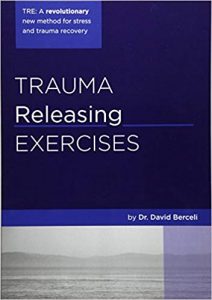
The first book is Trauma Releasing Exercises. The second book is from Namaste Publishers and it’s called The Trauma Release Process. The third book is called Shake It Off Naturally. I would recommend the first or second book if you’re really just looking for a short introduction, how to do the exercises, and they’re easy reading stuff.
Okay. You mentioned that there are TRE providers all over who can assist you. How many are there? What’s involved in getting certified as a TRE provider?
There are probably, I’m guessing maybe about 3500 providers around the world in about 55 countries now. You can go to traumaprevention.com and you can click right there, find a provider. You can find providers in all different languages as well, not just in English which is really important. You can find them around the world.
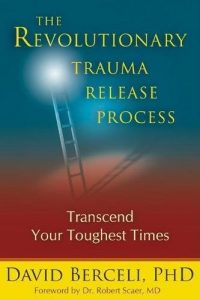
Those providers can also do sessions over Skype or over the Internet using some software programs so that people can do it right in their homes. We’re working a lot with people in African nations. They couldn’t possibly travel to Europe, as an example, or Middle Eastern countries. We’re doing a lot of work there and they can’t come. Or because of the economics, they can’t afford to do it even. We do it right over the Internet which I think is extremely valuable. So they can do sessions that way.
To become a provider, you’d have to go through a training program. Right now our training programs, although they’re all over the world, they’re still not in some of the developing nations where you have some of the highest levels of trauma and those things. We’re trying to figure out how do we create the training program over the Internet as well so they could get access to it.
The training program basically consists of you attend three-day training. Two-weekend training, basically, which are three days long. Then, you do a series of supervisions where you have to do TRE yourself so you can continue to experience what it does to your own body. And then, you have to guide other people through TRE so that we can supervise you doing that, make sure that you are safe with those people. Then you can be certified after that.
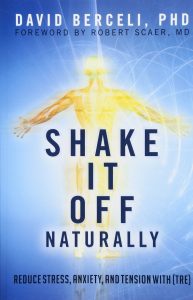
It’s really just making sure that you understand the process and that you know how to guide someone through it safely. The thing that I like about the program because we started it from the beginning, is you don’t need to be clinical in any way. You could be a plumber, you could be a carpenter, you could be a policeman or a fireman. You don’t have to have a clinical background because we’re really teaching a basic exercise routine and it’s about activating the tremor mechanism which anybody can do.
The only thing that we need is that the person understands how to assess the person that you’re working with. Are they safe enough to be able to do this at home by themselves? Meaning they won’t have an emotional flooding experience. If they are, then they can do it at home. We teach them how to observe that, but you don’t have to be clinically trained to be certified as a TRE provider.
That’s pretty unusual. A lot of times you have to be like a chiropractor or a naturopath or something in order to take some sort of certification like those.
Right. The reason that we started out this was that it would immediately eliminate 95% of the population from being able to be trained. It’s the very population that can’t get the chiropractors or craniosacral therapist or psychotherapist. They are the ones who are trying to get TRE to them. We’re trying to get them to do it to themselves and to get it to spread within their own population.
Once you limit it to clinical practitioners, in my understanding, that paradigm is already broken. Clinical practitioners, no matter how many we are, no matter how many fields, will not be able to heal the degree and the prevalence of trauma on this planet. We must empower the traumatized people themselves to heal themselves. We are not able to do it, it’s already too overwhelming.
It makes a lot of sense. One thing that you focus on is stress reduction. I’m curious what your take is on stress overall. There’s supposedly a good kind of stress (eustress) that we don’t want to necessarily reduce or have it go away completely, but there are plenty of stressors, especially in our western world of just chronic stress of traffic and work environment, working in a cubicle all day without having enough breaks or time outside or what have you. There’s a lot of unhealthy stress. I’m curious to hear what your recommendations would be for our listener in terms of reducing and even preventing stress in our typical western lifestyle.
You’re right. There is healthy stress. Sports is a good example of that. You could go out, play sports, have fun, and you’re playing with your friends, it’s no big deal who wins or loses. That’s healthy stress because you’re being stressed about trying to win the game, but it’s not the big of a deal. But once you’re a multi-million dollar football player, as an example, nice fun stress becomes very difficult stress. It’s not healthy to stress at all because you have to win to make money or to have a good ego or whatever.
There is healthy stress and unhealthy stress. We experience those all the time in our lives. Here is my point. This tremor mechanism, when you activate it, it reduces the stress levels in the body. That’s very clear. What should naturally happen like the dog that you talked about earlier is that if I start to stress out again the next day, I should feel an instinct inside myself to actually want to shake. It should be evoked naturally and I’m sensitive enough to feel it. Or even in the stressful situation the next day, I might discover that I actually do start to shake because I have made myself available again to the shaking mechanism and it now knows when to activate itself. If I do start to shake, then I could say, “Oh my God, I didn’t realize it, but I’m under stress,” because the body will only activate that mechanism when it’s under stress.

You made me think of the song by Taylor Swift called Shake It Off.
I’ve gotten a lot of videos from people talking about TRE and singing the song Shake It Off. It’s a very good application of the song.
What should I have asked you but I didn’t?
I’m still working on this one, but I think there’s something significant to look at. When we reduce stress in our bodies and our life becomes pleasurable, simple, and easy. It seems to be the nature of the human person to then begin to expand their thinking. Now they think of what’s my purpose in the world? What’s my legacy I want to leave? What happens after death? People begin to seem to expand consciousness and they expand, I want to be kind and compassionate to human beings. I want to contribute money to an organization. I want to donate my time to a soup kitchen. Somehow, when we reduce stress, it seems to be the nature of the human organism or the human person to then expand outwards to embrace humanity at a bigger level.
That’s very important, I think because when I’m under stress, I’m really just thinking about me and how do I struggle and survive. When the stress is gone, not only do I not just think about me, but I actually begin to think about how I can contribute as a human being on the planet to other human beings.
We need to research that more because I see it all over the planet. It’s not cultural, it doesn’t have linguistic patterns to it. Every human being seems to do this. I think that is our next step of not just how do I resolve stress and heal my trauma, but what happens to me after that, is I think the next place that science should be researching because if that’s true, reducing stress has some extreme implications for how humanity begins to treat itself, care for itself, and then maybe particularly how does humanity actually progress.
So we could end up with the enlightenment of humanity by just reducing the stress and helping people to self-actualize.
Exactly right and I think we need to give a lot more consideration to that.
‘There's no way that you're going to recover from trauma without including the body.’ -Bessel van der Kolk Share on XOn the flip side as you say, when we’re focused on ourselves and just our survival, it’s hard to think about the bigger picture. Reminds me of a learning from Tony Robbins that when you’re depressed, you’re just focused on yourself, you’re very selfish and inward-focused. When you’re focused on somebody else, helping them out, you forget your own depression and your own misery, whatever that you’re going through. It’s very therapeutic to just focus on helping others through whatever they’re going through.
That’s very true and you actually see it happen in life if you live in stressful situations. Look at a hurricane, or an earthquake, or a natural disaster, all of a sudden we’re bombarded on the news of how human beings are helping human beings. That even though they might be suffering under their own stress, somehow the collective suffering, everybody reaches out and helps each other. We should explore how does that happen because I think that we could actually increase the potential and the possibilities of that happening more often and on a larger scale.
And hopefully, without some major horrible natural disaster.
Exactly right. I believe we can do it without natural disasters, we have to look at how does the human person do that. It’s a phenomenon kind. If we explore that more, I bet we could replicate it.
That’d be amazing. That would be a game-changer.
It certainly would be. I think, as humans, we’re capable of it.
I think we need to dig deeper to save ourselves, our human race, and the planet. It’s coming to a do or die moment.
But see, history has proven, it’s the do or die moment that we most often will make it through that. When the hurricane hits, that’s the do or die moment and then all of a sudden, our humanity comes out. We’re looking at it on a larger scale. The do or die moment unfortunately maybe one of the necessary elements until we mature more as a human species. Maybe one of the necessary elements we need that actually does push back to remember who we are as a human species, that we want to be together, and that we do love one another. Unfortunately, we may still need trauma to evoke us to that level of humanity.
That brings up a point that I thought about recently that ego is often maligned as being a thing that we want to get rid of or to push down and not be so much in our ego. But it exists for a reason. It’s a gift to have something to push against. Just like bad weather is a gift that helps us to appreciate the sunny weather and the beautiful days, we get that contrast. We need the contrast.
Now you’re talking about ego. Let’s go back to the brain controlling the body. The ego is simply too strong. What I discovered is that when people tremor, particularly those who are those control freaks (and many of us are control freaks), when they tremor, they can feel that they want to stop it, but it’s not uncomfortable. They don’t like being out of control, that’s the uncomfortable piece.
What’s really interesting is that I discovered and I told them, “Just keep doing the tremor mechanism. What happens is if you tremor enough times, four, five times, that’s about all it takes, the ego begins to relinquish its control because the tremor is producing pleasure in the body. The ego likes pleasure, so it starts to relinquish control.” I believe it’s the balance that we need between ego and body, which is what we’re missing. That’s what will help us restore again.
The ego was good. It’s good when it’s in balance to a body in which it is inhabited. It’s living inside the body. Let’s let the body inform the ego more often of whether this is pleasurable and safe, and then the ego will calm down.
There’s a saying that living in your head, which I did a lot of in my adult life, that’s less of a problem these days than it used to be, but then you’re disconnected from your body and you’re also surface level, very egoic and not connected to your spiritual side, to your inner. Not a great place to be.
It’s actually an isolated lonely place to be. If we can find ways to down-regulate that ego control which body worked us, that’s why people go to a massage therapist. That’s where they want to fall asleep on the table. Once falling asleep is I’m in safe hands, somebody’s pushing against the tissue that’s tight, it’s starting to release my ego, let’s go and you get off the table and you say, “I’m so relaxed. I’m going to go upstairs and go to bed.” It was only because they worked on your body. They didn’t do psychotherapy with you to release your ego. They just did body work on you. That relaxed you and the ego relinquish control.
Oftentimes, traumatized people are not sensitive enough to their feelings. If somebody can be there to help them regulate, the process would be a lot quicker and easier. Share on XI definitely need body work. I definitely need it.
Everybody definitely needs body work. We live in a body, we need to take care of it.
Our body is a temple and you got to take care of it.
Get a massage.
I will. I commit to doing it this month. I will do it. How do people get in touch? How do people learn more about TRE and even potentially get certified?
They can find everything they want on traumaprevention.com. It has every detail that they need about how to do the exercises, who to contact to have themselves guided through the exercises. You can buy any of my books or DVDs on there and they can find out how they can be certified.
Awesome. Thank you so much, David. This was awesome, enlightening, and hopefully inspiring for our listeners to give this a try and see how it helps them to make perhaps a lifelong transformation in their lives.
Great. Thank you so much. That was fun. I enjoyed talking with you.
All right. Listener, we’ll catch you on the next episode of Get Yourself Optimized. In the meantime, have a fantastic week.
If this resonated with you, then I highly recommend you listen to my interview of Fred Gallo, an expert in tapping, also known as EFT or emotional freedom technique, that’s episode # 53.
